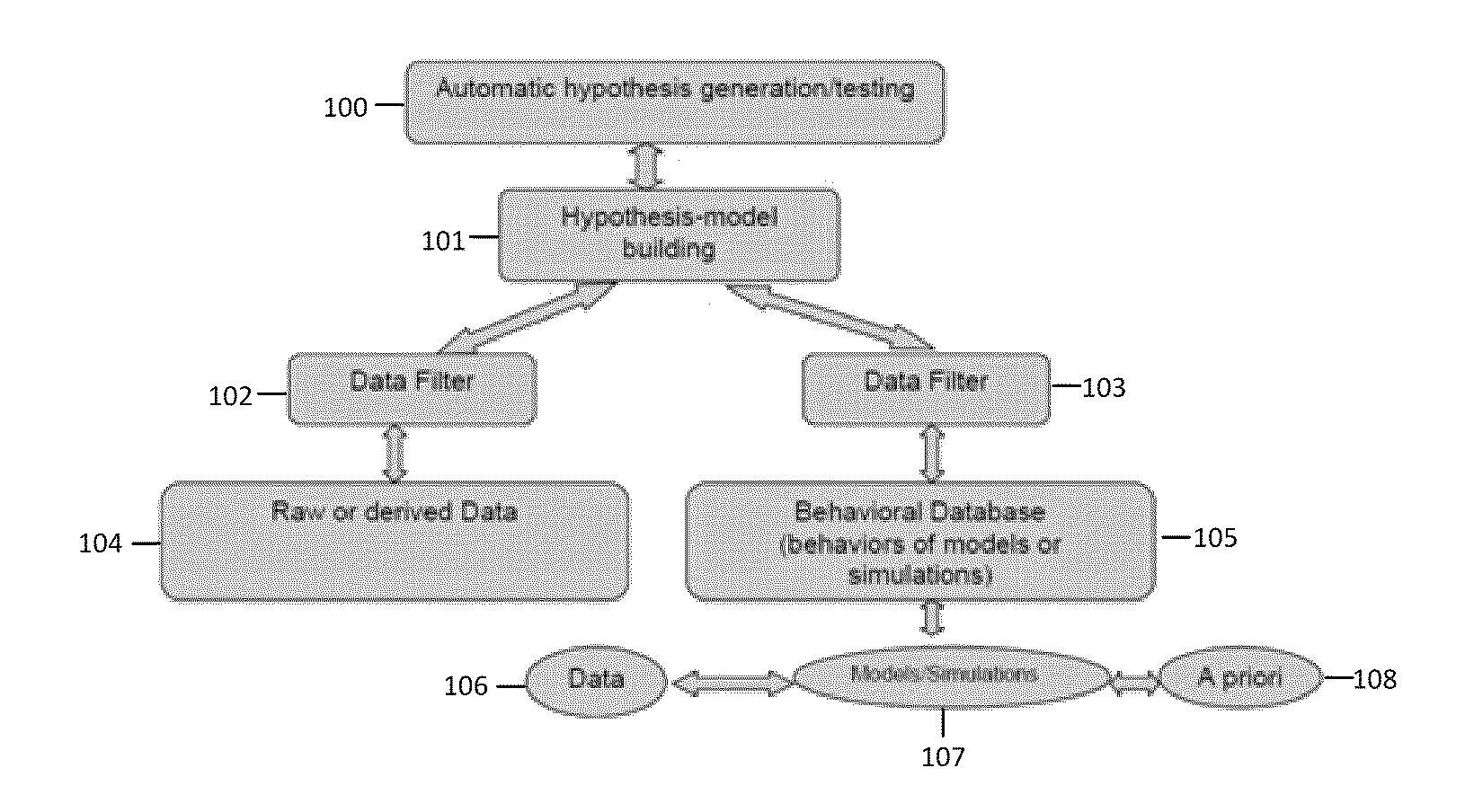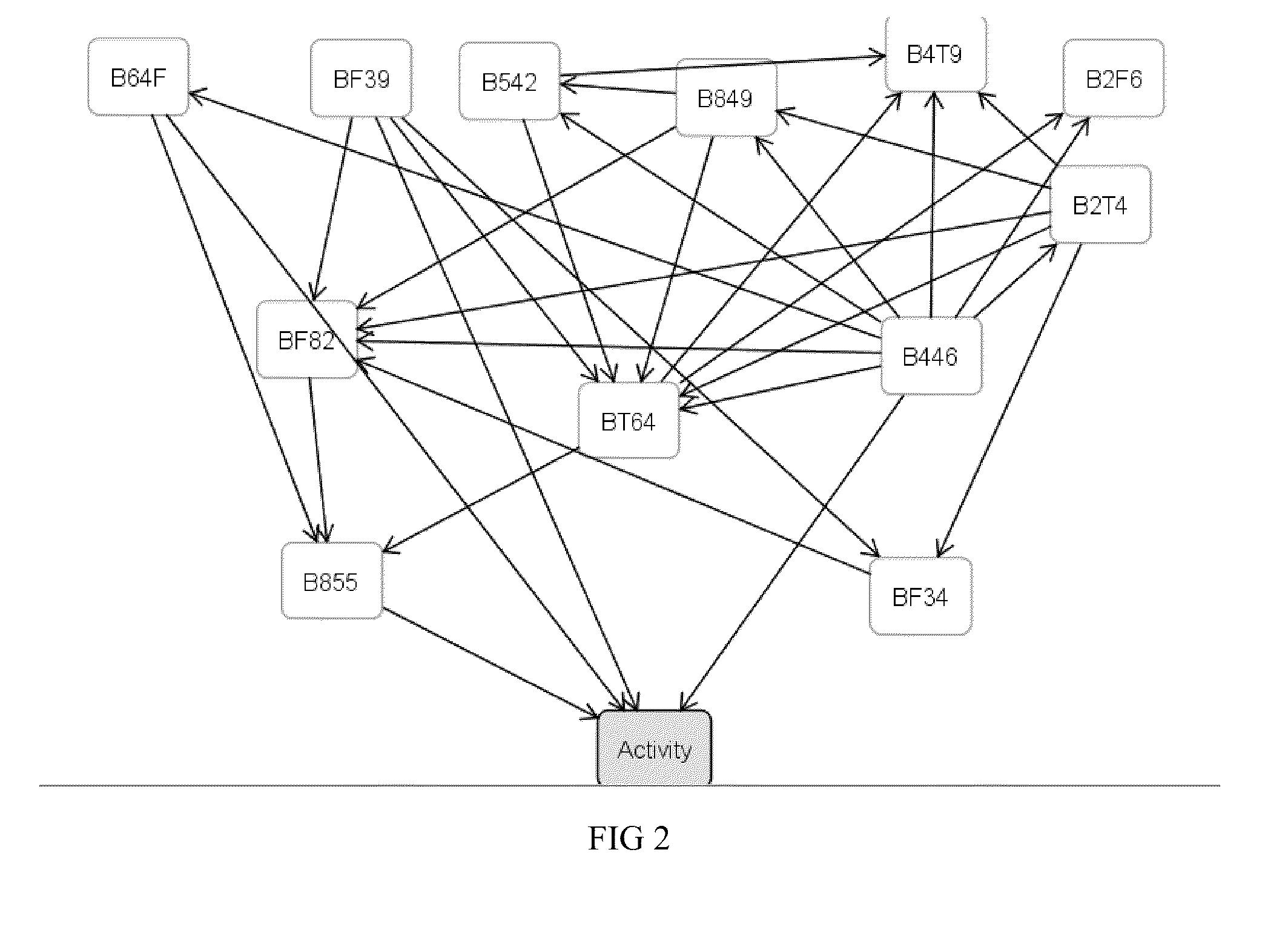FlexSCAPE: Data Driven Hypothesis Testing and Generation System
a data driven hypothesis and generation system technology, applied in the field of data driven hypothesis testing and generation system, can solve the problems of significant biases, resulting errors, and possible noisier hypotheses, and achieve the effect of reducing the amount of noise and increasing the noise in raw data
- Summary
- Abstract
- Description
- Claims
- Application Information
AI Technical Summary
Benefits of technology
Problems solved by technology
Method used
Image
Examples
example
Combinatorial Chemistry Application / Rational Drug Discovery
[0070]As an example of the method of the present invention, we present an application from combinatorial chemistry where the objective is to identify combinations of chemical sub-structures that maximize the likelihood that a molecule has the desired biochemical activity against a specified target. Generating hypotheses around optimum sub structures can facilitate new approaches to rational drug discovery. In this example, we use a data set consisting of 7812 compounds where each compound is described by 960 binary structural descriptors. Only 56 compounds are active against the target, with the remaining 7756 compounds inactive. In the method of the present invention, mutual information measures were used to reduce the 960 binary structural descriptors into an initial list of the 100 most informative individual descriptors. Mutual information measures were then used to further reduce the 100 most informative features down t...
PUM
 Login to View More
Login to View More Abstract
Description
Claims
Application Information
 Login to View More
Login to View More - R&D
- Intellectual Property
- Life Sciences
- Materials
- Tech Scout
- Unparalleled Data Quality
- Higher Quality Content
- 60% Fewer Hallucinations
Browse by: Latest US Patents, China's latest patents, Technical Efficacy Thesaurus, Application Domain, Technology Topic, Popular Technical Reports.
© 2025 PatSnap. All rights reserved.Legal|Privacy policy|Modern Slavery Act Transparency Statement|Sitemap|About US| Contact US: help@patsnap.com



